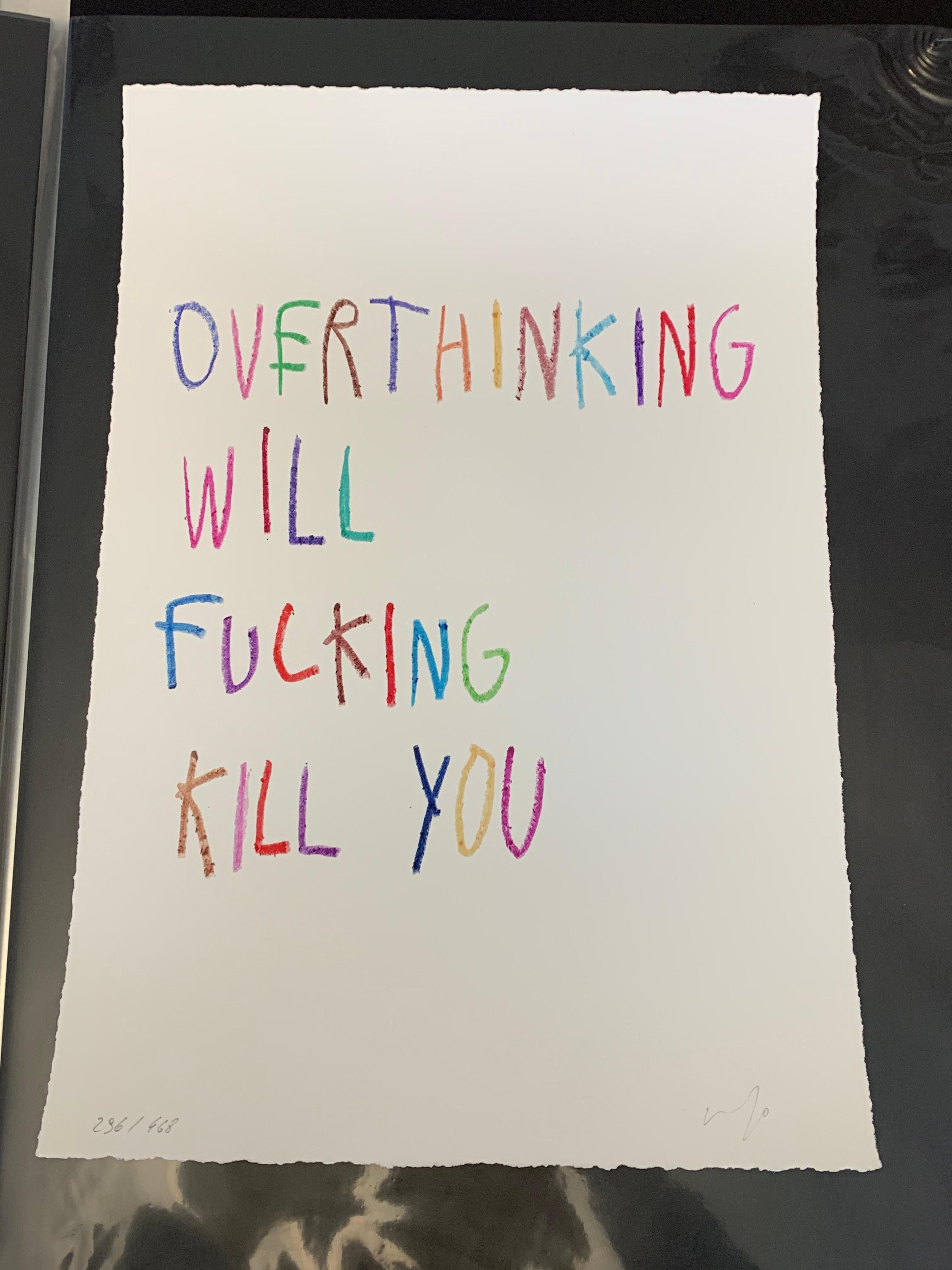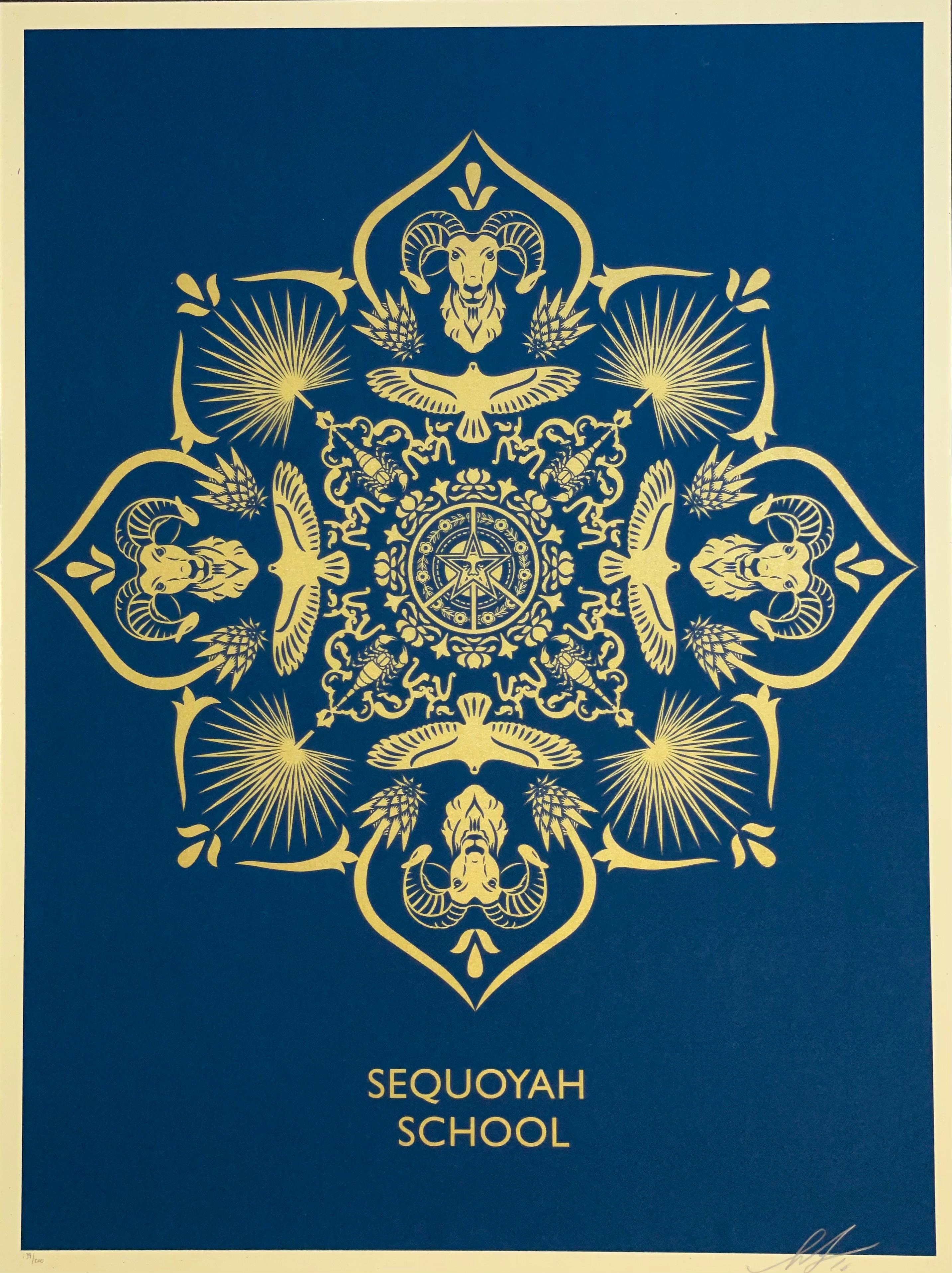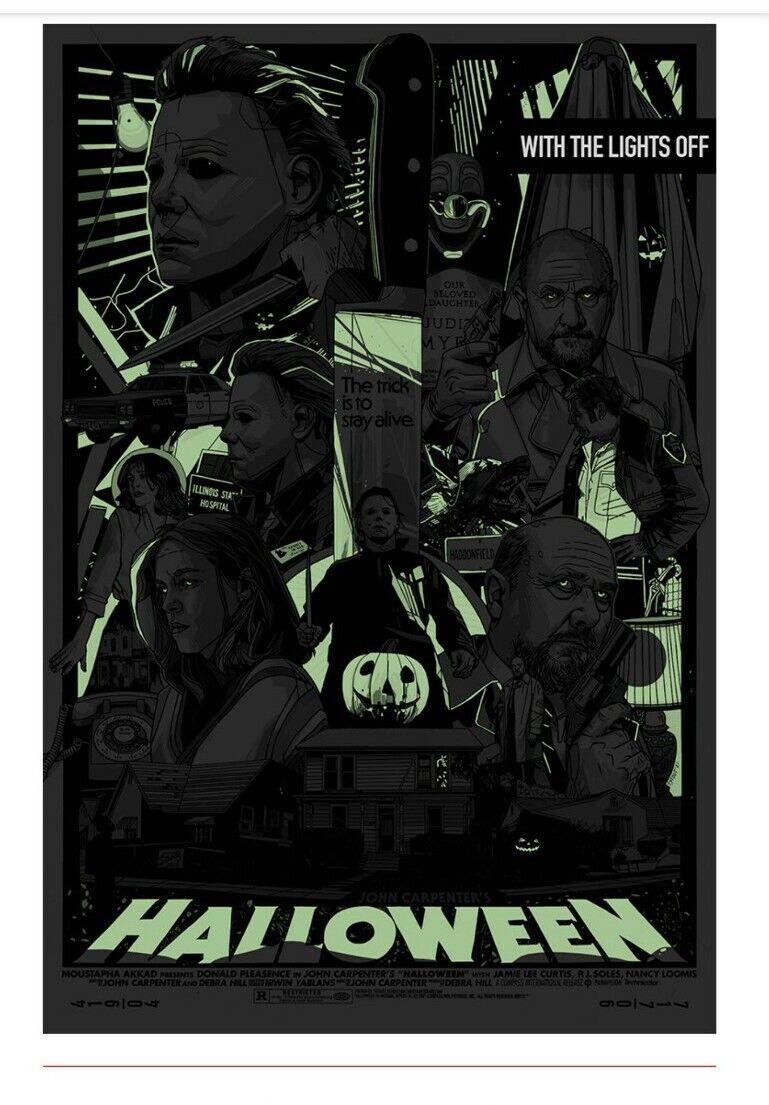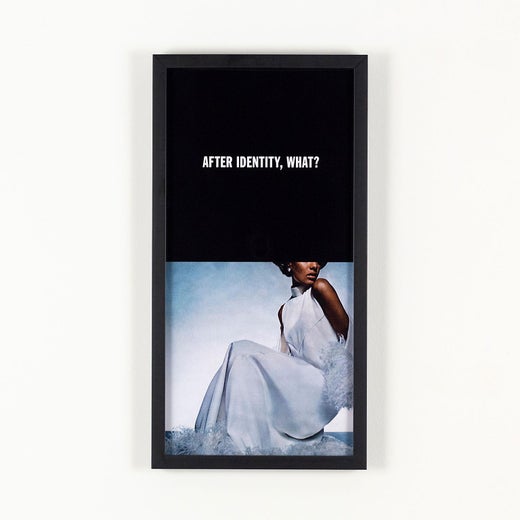Hank Willis ThomasHank Willis Thomas Who Taught You to Love? Signed and Numbered Print2021
2021
About the Item
- Creator:Hank Willis Thomas (1976, American)
- Creation Year:2021
- Dimensions:Height: 11.4 in (28.96 cm)Width: 33.5 in (85.09 cm)Depth: 0.1 in (2.54 mm)
- Medium:
- Movement & Style:
- Period:
- Condition:
- Gallery Location:Draper, UT
- Reference Number:1stDibs: LU1327213664712
Hank Willis Thomas
Hank Willis Thomas investigates the intersections of race, identity and consumerism in a variety of mediums including photography, sculpture, printmaking, large-scale public installation and filmmaking. His work addresses some of the most difficult and complex issues of our time, including systemic racism, marginalized communities, media bias and income inequality.
Thomas has exhibited his work across the globe, including in New York, Los Angeles, London, Milan, Brussels, São Paulo, Berlin, Hong Kong, and Paris. His work can be found in the permanent collections of the Brooklyn Museum, the Hong Kong Arts Centre, the Museum of Modern Art, the Studio Museum in Harlem, the Whitney Museum of American Art, the National Gallery of Art in Washington, D.C. and the Solomon R. Guggenheim Museum. Honors and awards include the Gordon Parks Foundation Fellowship (2019) and the Guggenheim Fellowship (2018).
Thomas earned an MFA in photography from California College of the Arts, and a BFA in photography and Africana studies from New York University. In 2017, he was awarded an Honorary Doctor of Philosophy degree from the Institute For Doctoral Studies in Visual Arts in Maine. He maintains a studio in Brooklyn, New York.
Find original Hank Willis Thomas art on 1stDibs.
- ShippingRetrieving quote...Ships From: Orlando, FL
- Return PolicyA return for this item may be initiated within 7 days of delivery.
- Hank Willis Thomas Love Over Rules Silk Screen Print Edition Of 100 EmbossedBy Hank Willis ThomasLocated in Draper, UTYEAR 2020 CLASSIFICATION: Limited edition MEDIUM TYPE: Print MEDIUM/MATERIALS: Thick Stock Black Fine Art Paper with Deckled Edges CATEGORIES: Embossed Paper / Silkscreen / Pop and ...Category
2010s Pop Art More Prints
MaterialsScreen
- Over Thinking Will Fucking Kill You Screen Print CB HOYO Urban Art StreetBy CB HoyoLocated in Draper, UTCB Hoyo’s irreverent multidisciplinary practice—which spans painting, sculpture, and installation—approaches art-world fraud, forgery, and hype with a sense of humor. The self-taught...Category
2010s Pop Art More Prints
MaterialsScreen
- Shepard Fairey Benefit Print for Sequoyah School Obey Giant Charity Street UrbanBy Shepard FaireyLocated in Draper, UTHand Signed & Numbered by the artist himself Shepard Fairey, in pencil dated 2016. Very Rare Benefit Silkscreen Print from 2016. YEAR: 2016 CLASSIFICATION: Limited edition MEDIUM TYPE: Fine Art Print MEDIUM/MATERIALS Silkscreen on Fine Art paper with Gold Metallic Inks INVENTORY ID N/A CATEGORIES Silkscreen / Graffiti and Street Art / Pop and Contemporary Pop / Cultural Commentary / Outsider Art DIMENSIONS 24 × 18 in 61 × 45.7 cm EDITIONS Edition of 200 Comes with Certificate Of Authenticity from NEW UNION GALLERY...Category
2010s Pop Art More Prints
MaterialsGold Leaf
- Tyler Stout Halloween Screen Print Michael Myer's Horror Movie Limited EditionBy Tyler StoutLocated in Draper, UTPublished by Grey Matter Art Halloween Regular Edition by Tyler Stout 24” x 36” Screen Print - (4/Color on French Speckletone Madero Beach) Hand-Numbered ...Category
2010s Pop Art More Art
MaterialsScreen
- Tyler Stout Halloween Screen Print Michael Myer's Horror Glow Limited EditionBy Tyler StoutLocated in Draper, UTPublished by Grey Matter Art Halloween Regular Edition by Tyler Stout 24” x 36” Screen Print - (4/Color on French Speckletone Madero Beach) Artist Proof (...Category
2010s Pop Art More Art
MaterialsScreen
- Tyler Stout Halloween Screen Print Michael Myer's Gold Ink Limited EditionBy Tyler StoutLocated in Draper, UTGet ready to elevate your movie poster collection with the Halloween Regular Edition by Tyler Stout, a stunning 24” x 36” screen print published by Grey Ma...Category
2010s Pop Art More Art
MaterialsScreen
- KAWS CLEAN SLATE 2022 Screenprint 30 x 24 inches Edition of 100By KAWSLocated in Dallas, TXAn exciting new KAWS print, created especially for the Modern in conjunction with the 20th anniversary of the museum’s Tadao Ando designed building is now ...Category
2010s Pop Art More Prints
MaterialsScreen
- Marilyn Portrait (Red)By Russell YoungLocated in Washington, DCArtist: Russell Young Title: Marilyn Portrait (Red) Portfolio: Marilyn Portrait Medium: Hand-pulled acrylic and enamel silkscreen on paper Date: 2014 Edition: 25/25 Sheet Size: 27" x...Category
2010s Pop Art Portrait Prints
MaterialsEnamel
- 1970's Large Silkscreen Abstract Geometric Day Glo Serigraph Pop Art Print NeonBy Chryssa Vardea-MavromichaliLocated in Surfside, FLSilkscreen on Arches paper, Hand signed and Numbered in Pencil. Serigraph in blue gray (silver). Chryssa Vardea-Mavromichali (Greek: Χρύσα Βαρδέα-Μαυρομιχάλη; December 31, 1933 – December 23, 2013) was a Greek American artist who worked in a wide variety of media. An American art pioneer in light art and luminist sculpture widely known for her neon, steel, aluminum and acrylic glass installations, she has always used the mononym Chryssa professionally. She worked from the mid-1950s in New York City studios and worked since 1992 in the studio she established in Neos Kosmos, Athens, Greece. Chryssa was born in Athens into the famous Mavromichalis family from the Mani Peninsula. one of her sisters, who studied medicine, was a friend of the poet and novelist Nikos Kazantzakis. Chryssa began painting during her teenage years and also studied to be a social worker.In 1953, on the advice of a Greek art critic, her family sent her to Paris to study at the Académie de la Grande Chaumiere where Andre Breton, Edgard Varese, and Max Ernst were among her associates and Alberto Giacometti was a visiting professor. In 1954, at age twenty-one, Chryssa sailed for the United States, arrived in New York and went to San Francisco, California to study at the California School of Fine Arts. Returning to New York in 1955, she became a United States citizen and established a studio in the city. Chryssa's first major work was The Cycladic Books preceded American minimalism by seventeen years. 1961, Chryssa's first solo exhibition was mounted at The Guggenheim. 1963, Chryssa's work was shown at the Museum of Modern Art in curator Dorothy Canning Miller's Americans 1963 exhibition. The artists represented in the show also included Richard Anuszkiewicz, Lee Bontecou, Robert Indiana, Richard Lindner, Marisol, Claes Oldenburg, Ad Reinhardt, James Rosenquist and others. 1966, The Gates to Times Square, regarded as "one of the most important American sculptures of all time" and "a thrilling homage to the living American culture of advertising and mass communications." The work is a 10 ft cube installation of two huge letter 'A's through which visitors may walk into "a gleaming block of stainless steel and Plexiglas that seems to quiver in the play of pale blue neon light" which is controlled by programmed timers. First shown in Manhattan's Pace Gallery, it was given to the Albright-Knox Art Gallery in Buffalo, New York in 1972. 1972, The Whitney Museum of American Art mounted a solo exhibition of works by Chryssa. That's All (early 1970s), the central panel of a triptych related to The Gates of Times Square, was acquired by the Museum of Modern Art between 1975 and 1979. 1973, Chryssa's solo exhibition at the Gallerie Denise René was reviewed for TIME magazine by art critic Robert Hughes before it went on to the Galleries Denise René in Düsseldorf and Paris. Other works by Chryssa in composite honeycomb aluminum and neon in the 1980s and 1990s include Chinatown, Siren, Urban Traffic, and Flapping Birds. Chryssa 60/90 retrospective exhibition in Athens in the Mihalarias Art Center. After her long absence from Greece, a major exhibition including large aluminum sculptures - cityscapes, "neon boxes" from the Gates to the Times Square, paintings, drawings etc. was held in Athens. In 1992, after closing her SoHo studio, which art dealer Leo Castelli had described as "one of the loveliest in the world," Chryssa returned to Greece. She found a derelict cinema which had become a storeroom stacked with abandoned school desks and chairs, behind the old Fix Brewery near the city center in Neos Kosmos, Athens. Using the desks to construct enormous benches, she converted the space into a studio for working on designs and aluminum composite honeycomb sculptures...Category
1980s Pop Art Abstract Prints
MaterialsScreen
- 1970's Large Silkscreen Abstract Geometric Day Glo Serigraph Pop Art Print NeonBy Chryssa Vardea-MavromichaliLocated in Surfside, FLSilkscreen on Arches paper, Hand signed and Numbered in Pencil. Serigraph in white, back, blue gray (silver). Chryssa Vardea-Mavromichali (Greek: Χρύσα Βαρδέα-Μαυρομιχάλη; December 31, 1933 – December 23, 2013) was a Greek American artist who worked in a wide variety of media. An American art pioneer in light art and luminist sculpture widely known for her neon, steel, aluminum and acrylic glass installations, she has always used the mononym Chryssa professionally. She worked from the mid-1950s in New York City studios and worked since 1992 in the studio she established in Neos Kosmos, Athens, Greece. Chryssa was born in Athens into the famous Mavromichalis family from the Mani Peninsula. one of her sisters, who studied medicine, was a friend of the poet and novelist Nikos Kazantzakis. Chryssa began painting during her teenage years and also studied to be a social worker.In 1953, on the advice of a Greek art critic, her family sent her to Paris to study at the Académie de la Grande Chaumiere where Andre Breton, Edgard Varese, and Max Ernst were among her associates and Alberto Giacometti was a visiting professor. In 1954, at age twenty-one, Chryssa sailed for the United States, arrived in New York and went to San Francisco, California to study at the California School of Fine Arts. Returning to New York in 1955, she became a United States citizen and established a studio in the city. Chryssa's first major work was The Cycladic Books preceded American minimalism by seventeen years. 1961, Chryssa's first solo exhibition was mounted at The Guggenheim. 1963, Chryssa's work was shown at the Museum of Modern Art in curator Dorothy Canning Miller's Americans 1963 exhibition. The artists represented in the show also included Richard Anuszkiewicz, Lee Bontecou, Robert Indiana, Richard Lindner, Marisol, Claes Oldenburg, Ad Reinhardt, James Rosenquist and others. 1966, The Gates to Times Square, regarded as "one of the most important American sculptures of all time" and "a thrilling homage to the living American culture of advertising and mass communications." The work is a 10 ft cube installation of two huge letter 'A's through which visitors may walk into "a gleaming block of stainless steel and Plexiglas that seems to quiver in the play of pale blue neon light" which is controlled by programmed timers. First shown in Manhattan's Pace Gallery, it was given to the Albright-Knox Art Gallery in Buffalo, New York in 1972. 1972, The Whitney Museum of American Art mounted a solo exhibition of works by Chryssa. That's All (early 1970s), the central panel of a triptych related to The Gates of Times Square, was acquired by the Museum of Modern Art between 1975 and 1979. 1973, Chryssa's solo exhibition at the Gallerie Denise René was reviewed for TIME magazine by art critic Robert Hughes before it went on to the Galleries Denise René in Düsseldorf and Paris. Other works by Chryssa in composite honeycomb aluminum and neon in the 1980s and 1990s include Chinatown, Siren, Urban Traffic, and Flapping Birds. Chryssa 60/90 retrospective exhibition in Athens in the Mihalarias Art Center. After her long absence from Greece, a major exhibition including large aluminum sculptures - cityscapes, "neon boxes" from the Gates to the Times Square, paintings, drawings etc. was held in Athens. In 1992, after closing her SoHo studio, which art dealer Leo Castelli had described as "one of the loveliest in the world," Chryssa returned to Greece. She found a derelict cinema which had become a storeroom stacked with abandoned school desks and chairs, behind the old Fix Brewery near the city center in Neos Kosmos, Athens. Using the desks to construct enormous benches, she converted the space into a studio for working on designs and aluminum composite honeycomb sculptures...Category
1980s Pop Art Abstract Prints
MaterialsScreen
- 1970's Large Silkscreen Abstract Geometric Day Glo Serigraph Pop Art Print NeonBy Chryssa Vardea-MavromichaliLocated in Surfside, FLSilkscreen on Arches paper, Hand signed and Numbered in Pencil. Serigraph in black, gray (silver). Chryssa Vardea-Mavromichali (Greek: Χρύσα Βαρδέα-Μαυρομιχάλη; December 31, 1933 – December 23, 2013) was a Greek American artist who worked in a wide variety of media. An American art pioneer in light art and luminist sculpture widely known for her neon, steel, aluminum and acrylic glass installations, she has always used the mononym Chryssa professionally. She worked from the mid-1950s in New York City studios and worked since 1992 in the studio she established in Neos Kosmos, Athens, Greece. Chryssa was born in Athens into the famous Mavromichalis family from the Mani Peninsula. one of her sisters, who studied medicine, was a friend of the poet and novelist Nikos Kazantzakis. Chryssa began painting during her teenage years and also studied to be a social worker.In 1953, on the advice of a Greek art critic, her family sent her to Paris to study at the Académie de la Grande Chaumiere where Andre Breton, Edgard Varese, and Max Ernst were among her associates and Alberto Giacometti was a visiting professor. In 1954, at age twenty-one, Chryssa sailed for the United States, arrived in New York and went to San Francisco, California to study at the California School of Fine Arts. Returning to New York in 1955, she became a United States citizen and established a studio in the city. Chryssa's first major work was The Cycladic Books preceded American minimalism by seventeen years. 1961, Chryssa's first solo exhibition was mounted at The Guggenheim. 1963, Chryssa's work was shown at the Museum of Modern Art in curator Dorothy Canning Miller's Americans 1963 exhibition. The artists represented in the show also included Richard Anuszkiewicz, Lee Bontecou, Robert Indiana, Richard Lindner, Marisol, Claes Oldenburg, Ad Reinhardt, James Rosenquist and others. 1966, The Gates to Times Square, regarded as "one of the most important American sculptures of all time" and "a thrilling homage to the living American culture of advertising and mass communications." The work is a 10 ft cube installation of two huge letter 'A's through which visitors may walk into "a gleaming block of stainless steel and Plexiglas that seems to quiver in the play of pale blue neon light" which is controlled by programmed timers. First shown in Manhattan's Pace Gallery, it was given to the Albright-Knox Art Gallery in Buffalo, New York in 1972. 1972, The Whitney Museum of American Art mounted a solo exhibition of works by Chryssa. That's All (early 1970s), the central panel of a triptych related to The Gates of Times Square, was acquired by the Museum of Modern Art between 1975 and 1979. 1973, Chryssa's solo exhibition at the Gallerie Denise René was reviewed for TIME magazine by art critic Robert Hughes before it went on to the Galleries Denise René in Düsseldorf and Paris. Other works by Chryssa in composite honeycomb aluminum and neon in the 1980s and 1990s include Chinatown, Siren, Urban Traffic, and Flapping Birds. Chryssa 60/90 retrospective exhibition in Athens in the Mihalarias Art Center. After her long absence from Greece, a major exhibition including large aluminum sculptures - cityscapes, "neon boxes" from the Gates to the Times Square, paintings, drawings etc. was held in Athens. In 1992, after closing her SoHo studio, which art dealer Leo Castelli had described as "one of the loveliest in the world," Chryssa returned to Greece. She found a derelict cinema which had become a storeroom stacked with abandoned school desks and chairs, behind the old Fix Brewery near the city center in Neos Kosmos, Athens. Using the desks to construct enormous benches, she converted the space into a studio for working on designs and aluminum composite honeycomb sculptures...Category
1980s Pop Art Abstract Prints
MaterialsScreen
- Growing IBy Keith HaringLocated in Hollywood, FLArtist: Keith Haring Title: Growing I Size: 40 1/8 x 29 7/8 in. (101.9 x 75.9 cm) Medium: Screenprint in colors, on Lenox Museum Board, with full margins. Edition: 85 of 100 Year:...Category
1980s Pop Art More Prints
MaterialsScreen






